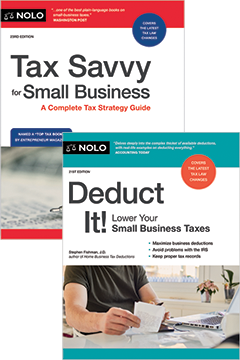Different sales methods mean different legal and logistical details.
There are several options for selling your business' goods. These include selling retail, working through distributors (wholesale), and placing products on consignment. It's smart to apply standard business procedures to these methods of selling in order to avoid legal problems and protect your business.
Retail Sales
These are sales made directly to the public, whether at a storefront, a crafts fair, open studio, or as the result of a special order. Such sales are often the bread and butter of small businesses. If you're selling retail, you need to decide:
- what payment types you'll accept
- your plan for handling and paying sales taxes
- your returns policy, and
- what, if any, credit you'll extend.
Wholesale Marketing
In a wholesale transaction, you sell quantities of your work to a dealer or retailer, usually at a discount. You get a higher volume of business and your buyer gets a discount. That person then resells your work to their clients. Wholesale transactions can take place at craft shows, directly between galleries and artists, or sometimes with the aid of agents.
A wholesale order can be exciting but you need to think through the terms before you accept it. Items to consider:
- Will you offer credit or other payment terms? If you do, can you "carry" your client until they pay?
- Is the client creditworthy? What will happen to your business if your client goes bankrupt? Are you putting all your eggs in one basket? When in doubt, don't extend credit.
- Do you have a wholesale order form? Or a signed purchase order or contract? Make sure it includes an agreed upon cancellation fee. This is very important if you are extending any kind of credit.
- Do you have a volume discount schedule? This allows the buyer to get a greater discount when they buy more units
- Are you selling on a returnable basis or a nonreturnable basis? Nonreturnable sales will help you reduce returns but clients often expect a greater discount.
Consignment Sales
A consignment occurs when you provide work to a reseller (the "consignee"), who agrees to pay you proceeds from the sales minus a commission. If your product doesn't sell, the consignee can return it. Under this arrangement, the consignee takes very little risk because it doesn't have to purchase goods. The advantage to you is that it provides access to sales outlets that might not otherwise be open to you.
Consignment sales can be big business. In craft sales alone, consignments account for more than $3 billion annually in the United States. These numbers can be exciting, but before you jump into consignment sales, you should consider:
- the credit or references of your consignee
- having a written consignment agreement that spells out the inventory being consigned and other details
- the retail price the goods will be sold for
- the consignee's fees
- who pays for shipping and other matters that will affect your ability to realize a profit on your goods
- the type and amount of insurance that the consignee will carry to protect your goods
- when the deal will terminate, and
- how disputes will be resolved.
Collecting Payment
No matter what you sell, you may have problems collecting what you are owed. The best way to avoid problems is to minimize them up front with good policies and by carefully offering credit on larger orders. If you have a client who does not pay and you can't work out a plan, you have several collections options:
- Turn the account over to a collection agency.
- Sue in small claims court.
- Hire a lawyer.
Looking for More Information?
Take care of the legal and business side of things now, so you can focus on creating your crafts. Get The Craft Artist's Legal Guide by Rich Stim (Nolo).



